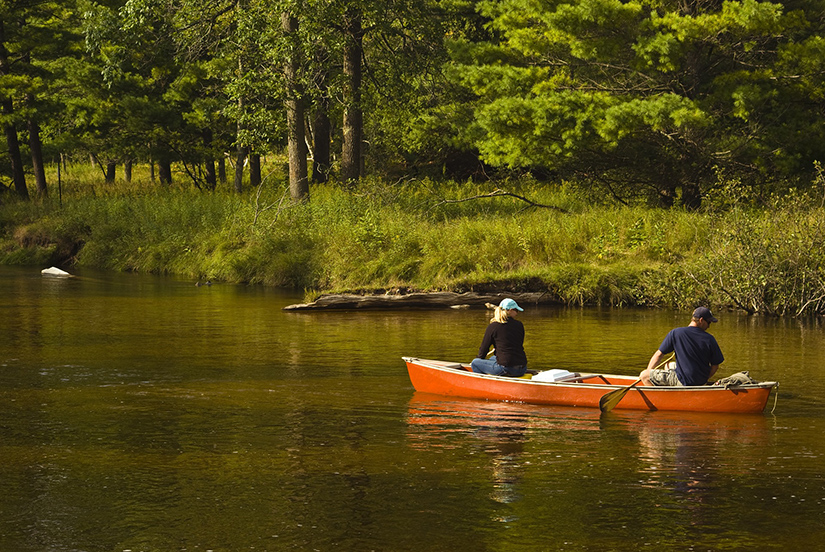
Canoe camping is a unique and meaningful experience. It offers a great way to get back to basics and spend some quality time with loved ones. Everybody needs a break every once in a while. You know…to escape from the craziness and enjoy some peace.
But what if you don’t know where to start? Well, don’t worry. Canoe camping is not as complicated as it may seem.
In this comprehensive guide, we will discuss important canoe camping tips and everything else you need to get started.
Soon enough, you will be ready to start going on endless adventures with your family or friends.
Canoe Camping: The Basics
There is a lot to learn about going camping with your boat.
So let us start from the beginning.
What Is Canoe Camping?
As you can tell from the name, canoe camping is combining two exciting activities: camping and canoeing.
You pack everything you need in your boat and paddle off to a thrilling adventure. It can be an overnight trip or for a whole week.
During the day you paddle leisurely, soaking in the sun, enjoying the scenery, and maybe doing a little fishing.
At night, you pitch your tent and camp under the gorgeous sky.
The experience is as peaceful and as amazing as it sounds. But you have to tailor your canoe trip to suit you if you want to have a good time.
Read on to know how you can do that.
How to Get Started with Canoe Camping: Everything You Need to Know
1. Before You Go: Pre-Trip Planning
I know I said canoe camping is not complicated, but it is also not that simple. You just can’t throw stuff into your canoe and start your trip.
You need to plan so you can be fully prepared.
a. Define Your Canoe Camping Trip Goals
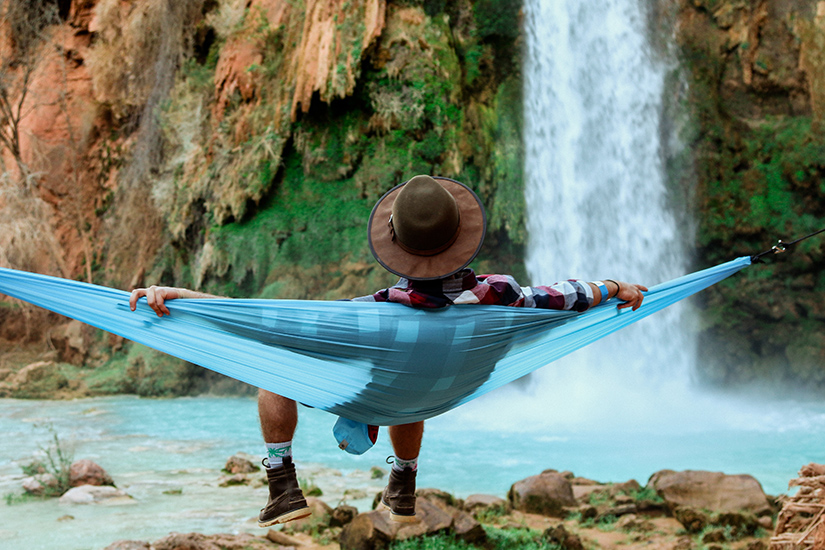
Why do you want to go on this trip?
Maybe you are looking to have a relaxed weekend– casual paddling and simple activities with the kids. You don’t want to be far from home or civilization.
Or maybe you want a real challenge– a remote location for a few days, far from anyone. You are looking to have an authentic experience in the wilderness. You’d probably enjoy a place where you can watch wildlife and do challenging activities.
Whatever your goal is will determine almost everything else.
b. Explore Your Options
Now that you know what you want, go through your options.
Look at different camping locations and sites.
Check how long it will take you to get there and the difficulty level. If you will be paddling a river, know that river’s flow level and the class of rapids.
See if the camping sites have any amenities nearby and whether you can access clean drinking water.
Will you be required to portage your canoe at some point?
All these things will help you narrow down your options using your goals.
c. Choosing Your Destination/Camping Site
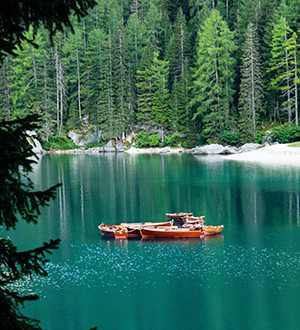
Pick a destination.
An established campsite would be a great option for complete beginners. You will have access to basic amenities, which means an easier time. They are also a good option if you are camping with children.
Alternatively, find your own campsite. Make sure your spot is at least 200 feet from any freshwater source to avoid contamination.
Once you have figured out exactly where you will be camping, you need to start learning everything about the site.
Check to see if you will need to make reservations or get a permit for the camping site.
The best thing is to talk to a local outfitter. They will tell you what you may need and help you with other important information.
d. Plan Your Canoe Trip Route
How will you get to the campsite? How long will it take?
Plan how long you will have to paddle each day and remember to include portages. For your first time, don’t make the mistake of planning to paddle for, say, 7 hours a day.
That is tiring and you won’t even have a good time. Keep it 5 hours or less, depending on your paddling speed. Take into account things like the wind which will affect your paddling efficiency too.
You also want to get to the camping site early enough to set up your tent.
Consult a map to assess the distance you have to cover and the portages (if any). Even better, talk to a local outfitter.
They know the area well and they can help you plan a route that is appropriate for your skill level. They’ll also help you know where to leave your car while you go on your adventure.
If you decide to go with an established campsite, check their website to see exactly where the sites are.
Additionally, you can always Google. But nothing beats consulting an experienced local.
For coastal region canoe trips, you should take tides into account.
2. Pre-Trip Packing
Packing for any kind of trip can be a daunting task. You want to bring everything you need (and might need) but space is limiting. Besides, the more you bring, the more brutal the portages will be.
So you have to be wise.
a. Remember the Elements
The weather plays a huge role in determining how you plan your trip and what you will bring.
You will be exposed to the elements for hours without protection. Be prepared for that.
For instance, if the weather will be hot, bring items that will offer protection the entire time you will be in the water. Don’t forget to carry a lot of drinking water and water purification. You can’t afford to risk dehydration.
b. What to Take on the Canoe Camping Trip
A canoe camping checklist is long, as you can imagine. But let’s talk about the basics first.
i) Paddling Equipment
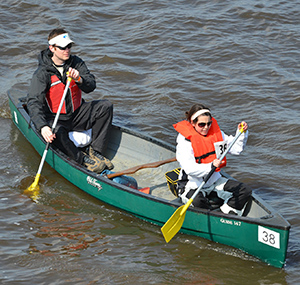
You will need a canoe, paddle, and a life jacket.
You can opt for a single or double canoe.
A single canoe is easy to maneuver for one paddler but it won’t have a lot of room for gear. It is just enough for a single canoeist. If you and your partner decide that each person should have their own canoe, the single option is more suited.
Double canoes have lots of room for gear and you can bring a child or dog. But steering it alone can be a struggle.
For families, you can get a big two-person boat that can hold three people. The adults can paddle as the child sits in the middle.
Every paddler should have their own paddle, obviously, and an extra one.
Federal law requires that all kids below 13 years of age wear a USCG-approved life jacket.
Everyone else on a recreational vessel should have a properly-fitting, USCG-approved PFD in the boat. But it will serve its purpose when worn. Check out the PFD laws by state.
You should also have an extra life jacket on board, just in case.
ii) Safety Equipment
When it comes to safety, there are three things you should never leave behind: a first-aid kit, a life jacket, and a means of communication.
We have already talked about the life jacket, but it cannot be emphasized enough. Never underestimate the water. PFDs save lives. It is not enough to have it in the boat. Wear it. Luckily, there are many comfortable life vests that you can wear all day.
You can either buy a first-aid kit or make one yourself. Making your own kit allows you to include everything you may need in case of an emergency.
The first-aid kit should have essentials for dealing with common situations such as burns, allergic reactions, sprains, cuts, and bruises.
It is even better if you take a first-aid course so you know what to carry and how to use it.
iii) Think Analogue
Don’t rely completely on your phone or electronic devices.
Bring a satellite phone, a hardcopy map, and a compass. This way, you won’t be stranded if your phone runs out of juice.
c. Where Will You Put Everything
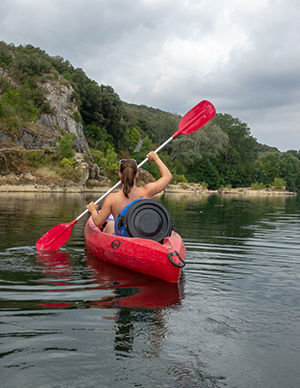
Throwing all your stuff in the boat randomly sounds easy. But it is not an option– not if you want to get to your destination with your gear intact.
Being organized is key. You will require backpacks, barrels, dry bags, and ziplock bags.
There are so many things that you wouldn’t want to get wet, like clothes. This is why a dry bag is a must-have. You can get a small one or a large one to fit as many essentials as possible.
Barrels are water-proof too and bear-proof. People mainly use them for food. But you can also put things like medicine and anything else, really, as long as there’s enough space.
Ziplock bags have so many uses when camping. They can be used to organize your food and medicine as well as keep valuables dry. Just make sure to bring enough and you will be surprised how useful they can be.
Everything else can go into the backpack– especially the stuff that can get wet.
Some campers get several small dry bags, put their belongings in them and then put the dry bags in a backpack. This way, your stuff stays dry and organized.
d. What To Wear for Canoe Camping
Don’t be so caught up in what you should carry that you forget to plan your wardrobe. Good thing you don’t have to wear any fancy clothes. What you wear will depend on the location and weather.
You can wear a T-shirt and pants/shorts, all quick-drying, and wet shoes.
Or you can bring a raincoat and enough layers if that will be appropriate for the weather.
e. Canoe Camping Trip Ultimate Checklist
Can you imagine how awful it would be if you got to the campsite and realized that you’d forgotten something important?
Unfortunately, that happens to the best of us.
So here is a comprehensive checklist to prevent that from happening.
Sleeping Equipment
- Tent
- Sleeping bag
- Sleeping pad
- Pajamas
Cooking and Food
- Biodegradable soap and a scrubber for cleaning up
- Lighters and matches
- Utensils
- Stove/cookware
- Meals and snacks
- Water storage
Personal Gear
- Dry shoes
- Rain pants and raincoat
- Warm tops (wool or synthetic)
- Dry shoes
- Long underwear
- Hiking boots
- Quick-drying pants and shirts
- Beanie
- Socks (wool and cotton)
- Undershirts
- Underwear
- Swimsuits
- Shorts
- Paddle gloves
- Sunhat
- Compact towel
Other Essentials
- Toiletries
- Sunscreen
- Sunglasses
- Bug repellent
- Water purification
- Headlamp
- Compressible pillow
- Pocket knife
- Medication
- Bug net
- Rescue throw bag
- First aid kit
- Cooler
3. 6 Simple Steps to Packing a Canoe for Camping
Knowing what to bring is one thing, packing it all into your boat is another.
a. What To Take on Your Canoe Camping Trip
Create a customized canoe camping gear checklist for your trip. The list above is a great guide.
Pro tip: have a gear checklist saved on your phone or computer. Then keep track of what you bring, use or wish you’d brought on your camping trips.
Remove what you didn’t use and add what you needed but didn’t have.
After a few trips, you will have a comprehensive and fully customized list.
b. Inspect Your Gear and See What Can Go Into Your Canoe
Get all your gear and inspect it. See if anything needs repairing. You wouldn’t want to start fixing stuff on the day you’re supposed to go camping. Inspecting your gear in advance gives you enough time to do repairs or replace things.
Take this opportunity to see if there are items you can remove. A canoe is not that big and you should only carry what you will use. Many times people tend to overpack, bringing what they think they might need.
Shorten the list as much as possible.
c. Pack Your Stuff Into the Canoe
Pack your gear into the bags/barrels and put it into the canoe. Put related items together so you will always know where to find something if you need it.
Determine where you will keep what, depending on factors such as how accessible you want them to be.
Note: have portaging in your mind while packing the gear. The more the bags, the more the trips.
d. Test Load Your Canoe
As with everything, practice is important. So be sure to practice test loading your boat with gear.
This is the time to find a loading strategy that works for you.
This step also allows you to think about gear placement in the canoe. For instance, which essentials should be accessible at all times?
e. Loading Strategy – Balance the Boat and Pack Light
Put the heaviest gear at the bottom and center to minimize the effect they will have on your balance. Place the lighter items at the ends. You should also keep your things below the gunwales. If they are too high it will affect your stability and balance.
f. Tie Your Camping Gear Down
The next step is to find a way to keep everything where you placed it. If the gear keeps moving around, it will affect balance and it will be easy to lose stuff.
Use tie-down straps to hold your things in place. Keep this simple so you can quickly access/remove the gear when you need to.
4. Getting Your Canoe to the Camping Destination
For most canoeists, driving to the camping destination is the most logical option. It makes sense because you will be traveling with your canoe and a whole lot of gear.
Once you get there, load your boat, making sure not to forget anything, and begin your adventure.
5. Paddling and Navigation
Paddling a canoe is simple, but you have to take time to master the techniques. This will allow you to paddle efficiently without wearing yourself out too quickly.
I highly recommend taking a class to acquire the necessary skills for your canoe camping trip.
But to help you get the idea here is a video on how to hold your paddle and paddle a canoe.
Here is another one showing how to perform basic canoe paddle strokes.
Navigation can be tricky when canoe camping. So in addition to your phone, you should have recent maps and a compass. And make sure you learn how to read them before going on your trip.
6. Portaging
Portaging is the least enjoyable part of canoe camping. It is the act of carrying your boat and luggage from one body of water to another or around an obstacle.
It sounds exhausting, doesn’t it? That’s because it is.
As mentioned above, have as few bags as possible when packing for your trip. If you have several small bags/barrels/bottles, put them all in bigger bags so you can make fewer trips.
At the portage, get everything out of the boat and out of the way. Carry your canoe. Come back for your bags.
It helps to have a partner because then they can help you with the portaging.
If you are wondering how you are supposed to lift a canoe to your shoulders, especially when alone, you’ll find this video helpful.
7. Setting Up Camp
Once you get to the site, unload your canoe and make sure you store it somewhere secure. Inspect the campsite then start setting up your tent.
The good thing about traveling as a group is that you can divide up tasks.
If you are camping as a family, this would be a great way to work together, catch up, and make memories.
8. Camp Cleanliness and Personal Hygiene
It is important to stay clean while camping and also keep the camping site clean.
Do all your washing– body, clothes, and utensils– far away from water sources. And only use biodegradable soap. If you decide to clean yourself by swimming in the lake, don’t use your biodegradable soap as it pollutes too.
Remember to follow the Leave No Trace guidelines.
6 Important Canoe Camping Tips
Here are 6 key canoe camping tips to help you have a safe and fun trip.
1. Practice Paddling
If you live near a body of water, practice paddling your canoe days or even weeks before your trip. If you can, load it with gear and practice steering it.
This is the time to practice all the techniques you’ve learned. It is also an opportunity to learn how to paddle harmoniously with your partner.
Practice moving around in the boat without tipping it.
2. Take Water Seriously
The water is fun, but it can also be dangerous. You can never be too cautious. Follow all the necessary precautions and, even better, join a canoe camping group so you won’t be alone.
Understand water classification and know what you can handle. Don’t overestimate your skills.
3. Capsized? Don’t Panic
The thought of capsizing with all your gear can be scary. But it happens– and it is not that scary.
If you take a class, you will learn how to handle a situation like this.
When you capsize, don’t panic. You have to think fast and decide your best option.
The easiest thing to do is to swim with your boat to shore.
If you are too far, you will need to right and reenter the canoe. It is easier if there are other canoeists to help you. Additionally, reentering a canoe is a skill that you have to learn.
Check out this video on what to do when your boat flips.
4. Bring a Spare Paddle
Always bring a spare paddle so if you lose one you won’t be stranded.
Ensure that the spare paddle is easily accessible too.
5. Stay Safe and Bring a First Aid Kit
Safety should be your top priority when canoe camping. The goal is to have a fantastic experience and make it back home to tell the stories.
Wear your PFD even before you get into the water. Keep looking until you find one that is comfortable enough for you to wear for long periods. Your life jacket should be USCG-approved and in good condition.
Avoid alcohol when paddling. Many boating accidents have been caused by alcohol. While in the water, you should be able to make quick decisions if the need arises. And you can’t do that under the influence. So just wait until you are nice and set at the camping site to enjoy your beer.
Bring a first-aid kit. We have discussed this above. You can buy one or make your own. Include everything you may need in an emergency.
Stick to the plan. Being spontaneous can add a little spice to the adventure but it is dangerous. The whole point of preparing is to avoid unwanted surprises.
So regardless of how strong the temptation may be, stick to your plan.
Speaking of…
6. Have a Plan
You can’t stick to it if you don’t have one.
Create a plan, detailing your route, your schedule, and your activities. Then share it with a loved one. It is important to have someone know where you are at all times.
Discuss the plan with your partner or group, making sure everyone understands. In your plan, don’t leave out what to do in case of possible unexpected scenarios.
While canoe camping, stay together and remember to communicate clearly at all times.
Canoe Camping Q&A
Q: What Do I Need for a Canoe Camping Trip?
A: You need paddling equipment, sleeping gear, cooking equipment and utensils, personal effects, and safety essentials. See the comprehensive list above.
Q: How Far Can I Paddle a Canoe in a Day?
A: The average paddler can paddle a canoe at a speed of 3 miles per hour. This number can be higher or lower depending on how fit you are and the weather.
If you decide to paddle for three or four hours a day, you will paddle about 9 to 12 miles.
Q: How Do You Prepare for a Canoe Trip?
A:
- Determine your goals– relaxed weekend, challenging experience, family fun, etc.
- Explore your destination/camping site options.
- Pick a camping site, depending on your goals.
- Research the destination/camping site– what you need, weather, etc.
- Plan your route.
- Gather everything you need.
- Go have fun.
Q: How Do You Portage a Canoe with Two People?
A: Portaging a canoe with two people is much easier than doing it alone.
For shorter distances, one person can grab the bow carry handle and the other one the stern carry handle.
For longer distances, however, you will need to carry the canoe upside down, over your shoulders as shown in this video.
Q: Overnight Canoe Camping Tips?
A:
- Make a list of everything you need to stay safe and comfortable.
- Pack light and load carefully– heavier stuff at the bottom and center.
- Use dry bags to keep your camping gear dry.
- Bring bug repellent.
- Don’t forget your maps, compass, permits, and any important paperwork.
- Wear appropriate gear, depending on the weather, and wear a PFD too.
- Secure your gear using bungee cords.
- Go with a friend.
Q: What Is Canoe Camping?
A: Canoe camping is where you combine canoeing and camping. You put all your gear in your boat and paddle to a campsite.
Conclusion
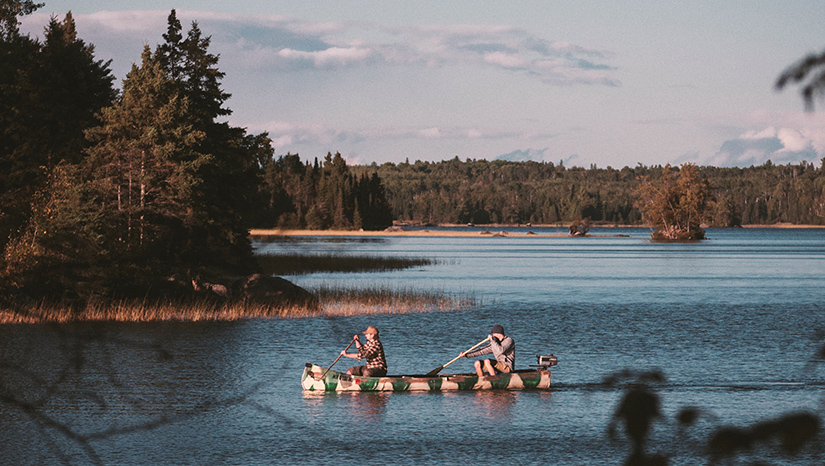
Going on an overnight or several-day canoe trip can be one of the best experiences ever. But to have the adventure you dream of, you must prepare properly. Define your goals then pick a location.
Carefully create a detailed plan and start gathering all the gear you require. Take a canoeing class and a first-aid class.
Lastly, have a great time– seriously. Make the most of it and enjoy every moment, even with the bugs!
Do you have any questions or comments? Feel free to share with us below.